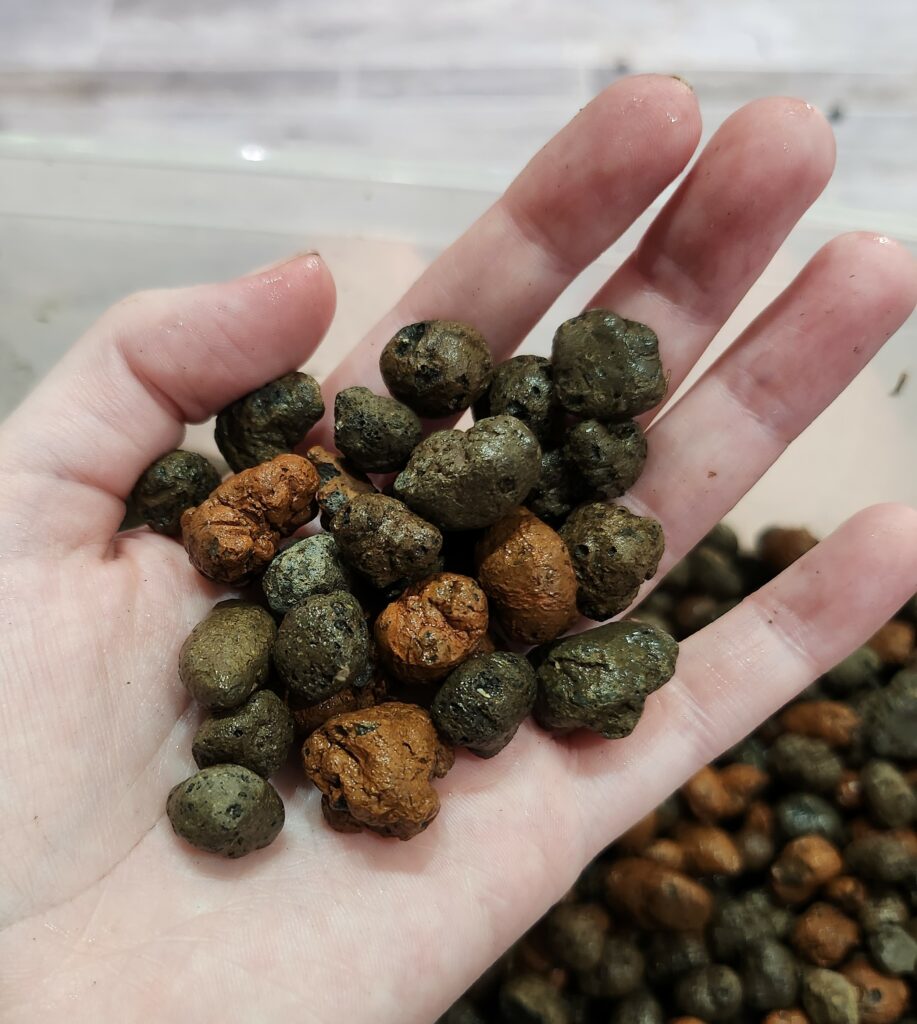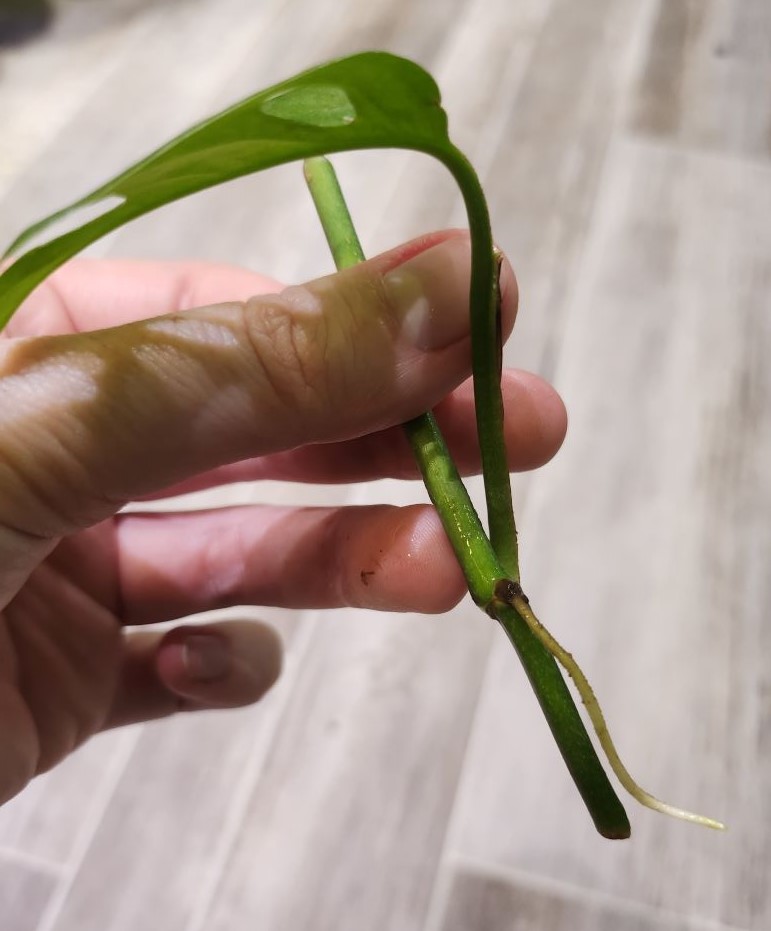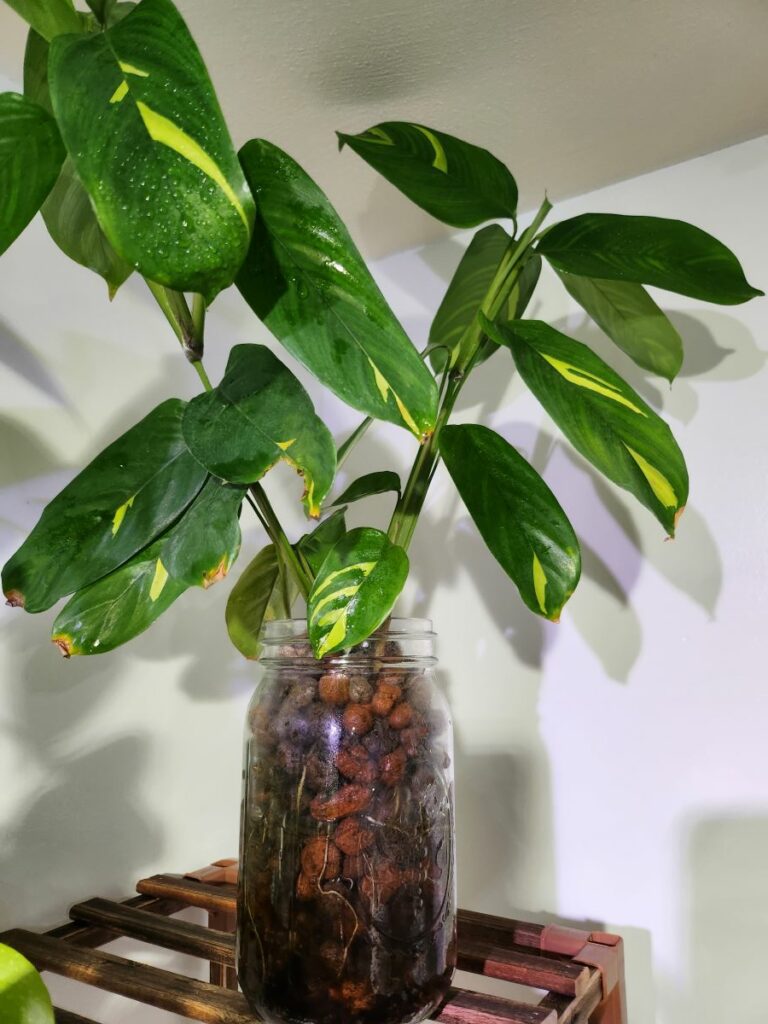Congrats on your new plant!
I’ve always loved plants, but keeping them alive was always troublesome. I have a history of overwatering and drowning all my plants. Until a friend of a friend told me about LECA, a growing medium to solve my plant-murdering tendencies. Now, I have over 200+ plants, all thriving in LECA, and I hope to help you do the same!
When I started LECA, there was a considerable knowledge barrier; there is a lot to learn with LECA, and it all can seem overwhelming. The main key point is that LECA works by capillary action; it wicks water up from a reservoir. You’re good to go if it has water in the bottom 1/3 of whatever container you put it in. No overwatering or guesswork!

This is my step-by-step guide to getting your new cutting into LECA. I’ll have links to other posts going into various details and debates in the LECA community, but this should get you started.
Step One
Firstly, you need a water-rooted plant; if you are on this page, you probably already bought one from me on marketplace. If you don’t have a water rooted plant, click here to learn how to water root cuttings so they are ready to transition to LECA.
Step Two
Now that you have a plant, you have a choice. You can keep it in water almost indefinitely as long as you change the water weekly and add a liquid fertilizer occasionally. Eventually, the roots will likely outgrow the container it is in or need more support; once that happens, you should follow the steps below to pot it up in LECA.

Step Three
Once the water roots are at least 2-4 inches long, you can transition to LECA. You will need to find another pot/vessel to put it in. There are two main options; the easiest is a clear vessel, like a 6oz mason jar.
The other option is a nursery pot (plastic pot with holes in the bottom, comes with most soil plants when you buy them) and some type of container to hold the water reservoir, generally a decorative pot without a drainage hole. This is called the cache pot method.
Key takeaway: LECA has to have a water reservoir, where, water sits so the plant can always access water without drowning.

For beginners, start with a clear mason jar or similar vessel to see the roots and water level easily.
Step Four
Put the LECA (washed or not washed, doesn’t make a big difference in my experience) in the bottom 1/3 of the container, then hold the plant in the container with the roots touching the LECA on the bottom, and fill in the LECA until it reaches the top of the container. Congrats! You potted up your first leca plant.

Step Five
Now, onto care and maintenance. Water you plant whenever the reservoir (the amount of water you can see in the container) falls below the bottom 3rd of the container. Basically, you want the water to touch just the tips of the roots and refill as necessary.
The LECA wicks the moisture up from the bottom to the roots, keeping them mostly dry and allowing lots of oxygen to get to them. This is why LECA is so easy. Just fill it to the bottom 3rd, and you’re good to go; no guesswork, no worrying about overwatering, you can confidently say you watered it precisely right.
You will eventually have to add liquid fertilizer. There are more details on that here, but you can get away without it if you change the water frequently. Now, just water your plant when you can see the level is low (this is why a clear jar is SO helpful) and put it in a sunny spot to grow.
- Click here for details on how take cuttings
- Click here for different ways to propagate your cuttings
- Click here for info on fertilizer and flushing
- Click here for help transitioning soil plants to LECA
- Click here for quick start guide to LECA
- Click here for help with root rot
- Click here for more details on me and why I love plants
- Follow me on instagram @chaosplant or Facebook @ChaosPlants
Feel free to message or DM me with questions. Love to talk all things plant and will gladly help you on your plant journey.
